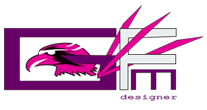XML Development
In the field of computer programming XUL symbolise itself as significant programming language in the web development. Usually XUL is pronounced as “ZOOL” among programmers and actually it is XML user interface markup language operates in Mozilla cross-platform applications like Firefox and Flock. XML is developed by Mozilla project. Implementation of “ZOOL” or XUL is provided completely by using Gecko layout engine. We offer you a strong technological platform for the XUL development, having experienced & talented expertise of XUL developers, in using XUL programming language for the development of XUL based applications. XUL is the programming language which can be easily implemented by professionals having expertise in web-programming & design and GFM designer, web development company UK, web development services possesses both for the development of quality applications for clients. XUL DESIGN includes several standards & technologies such as CSS, JavaScript and DOM. XUL is consisted of various ELEMENTS such as top level elements are dialog, wizard, window, page, etc. There are a variety of “Widgets” used in XUL for instance checkbox, menu, tree, toolbar, combo box, list box, textbox, button, radio button, labels and many more widgets are used as elements.
Like top level & widgets other XUL significant elements are Box model, Event & scripts and data source.XUL is popular for the development of Mozilla Firefox extension development and applications. HiddenBrains> can build feature rich cross-platform applications which can easily run whether connected with internet or disconnected. Our XUL developers can easily customize these applications with alternative texts, graphics and layout which can be localized for various markets
GFM has the experience and the technical know how to assist you in web designing, developing and deploying open standard infrastructure solutions based on XML and related standards. XML is the fastest evolving technology for Web Applications. To address the requirements of commercial Web publishing and enable the further expansion of Web technology into new domains of distributed document processing, the World Wide Web Consortium has developed an Extensible Markup Language (XML) for applications that require functionality beyond the current Hypertext Markup Language (HTML).
XML is a universal language for data on the Web that lets developers deliver content from a wide variety of applications to the desktop. XML promises to standardize the way information is searched for, exchanged, adaptively presented, and personalized.Data such as customer information, credit card transactions, purchase orders, and fulfillment requests can be converted to XML and shared across applications without changing legacy systems. XML can be used to exchange data between Web server and browser or between trading partners without the existing systems needing any prior description of the data's structure.
XML Applications Areas:
The applications that drive the acceptance of XML are those that cannot be accomplished within the limitations of HTML. These applications can be divided into three broad categories:
Applications that require the Web client to mediate between two or more heterogeneous databases.
Applications that attempt to distribute a significant proportion of the processing load from the Web server to the Web client.
Applications that require the Web client to present different views of the same data to different users.
Sign Up to our
Newsletter
















































